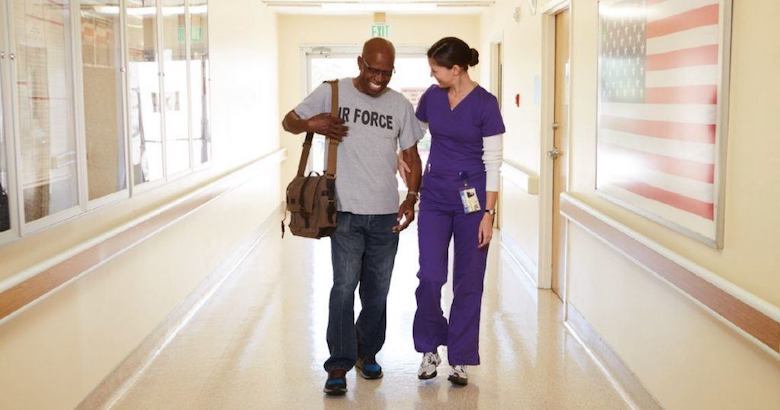
CUSTOMER: US Department of Veterans Affairs
CHALLENGE: Migrate from 130 different instances of an internally developed EMR system to a new commercial off-the-shelf EMR without affecting access to information and care for more than 9,000,000 US military veterans.
OUTCOME: Interoperability and a unified care record for all veterans based on InterSystems HealthShare provide complete patient information for clinicians and aggregated and normalized data to populate the new EMR system.
No one has ever called migration from one electronic medical record (EMR) system to a different one an easy task. For the US Department of Veterans Affairs (VA), the task was to make the transition from a 40-year old, internally developed EMR system to a new commercial off-the-shelf system. Challenges in this transition included:
- Complexity: Veterans under the care of VA typically have three times as many chronic conditions as their non-veteran counterparts. And veterans may receive care from physicians outside VA. Without bi-directional communication of medical and social history, there’s the risk of care decisions made with incomplete information.
- Scale: VA’s existing EMR is used across 172 hospitals and more than 1,074 outpatient clinics, by 320,000 healthcare professionals serving over 9,000,000 veterans. Each patient’s data must be kept for 75 years after the last activity.
- Diversity: VA operates 130 different instances of the legacy EMR, VistA, each modified to address the needs of specific populations of veterans.
For VA, a “rip and replace” transition to the new Cerner EMR was not an option. At this scale, rip and replace has been likened to performing a heart transplant on yourself. The risk is just too high. VA needed a better way.
A Strong Foundation of Interoperability for Any Transition Between Information Systems
In healthcare IT, the simplest solution to a problem is most likely the best. It’s even better when that solution can serve as the foundation to solve many additional problems, now and in the future. After some searching, including a foray into open source solutions, VA found what it needed in InterSystems HealthShare Unified Care Record and the interoperability technology it provides.
Better Data Access and Better Care for Veterans
As the first step in its EMR transition, VA used HealthShare to create VDIF EP (Veterans Data Integration and Federation Enterprise Platform). VDIF EP aggregates and normalizes clinical data from all instances of VistA and other systems across VA to create a single, unified care record for every veteran. This has been a goal of VA for more than a decade. A unified patient record enables clinicians to immediately and more efficiently use veterans’ clinical data from both VA and external providers, directly improving care for our nation’s veterans.
With VDIF EP, clinicians can now access a veteran’s entire medical history from a single view, instead of sifting through multiple sites to find all the relevant clinical data. This streamlined ability to see a complete view of the patient, without wasting time searching for it, enables clinicians to keep their focus on their patients. Veterans may have hundreds of encounters over multiple years of care with massive records and data. Even so, HealthShare enables VDIF EP to access and deliver this information with sub-second response times.
Cloud Deployment for Operational Economies Complementing VA’s cloud-first strategy, the organization prioritized migrating from an on-premise data center to a secure, FedRAMP compliant cloud environment, deploying VDIF EP on the Amazon Web Services (AWS) GovCloud. This transition significantly improved the ease and simplicity of provisioning resources, provided better storage latency, and gave VA the ability to deploy across AWS availability zones and various GovCloud regions.
The Cerner Transition, and New Uses for Comprehensive, Real-Time Data
VDIF EP functions as a health information exchange (HIE) and innovation platform, delivering consolidated data, analytics, and other functions wherever needed. It is feeding complete health records to the new Cerner system as that is rolled out at VA. During the transition, VDIF EP will unify data from legacy systems – at the sites that have not yet been switched to Cerner – and those that have been converted. As such, clinicians will have access to a unified patient record for their veteran patients, regardless of what VA site they staff.
VA is pursuing additional use cases for InterSystems HealthShare and VDIF EP’s unified care record that would have been too difficult or taken too long to accomplish otherwise. For example, with VDIF EP, VA was able to rapidly spin up its Community Care Referral and Authorization system for managing referrals and bi-directional information sharing with providers outside of VA, fulfilling VA’s obligation under the 2018 MISSION Act. VA is leveraging their investment by fulfilling the needs of multiple programs with one implementation. VA also adopted the mantra of “build once, use many,” which it is successfully doing with VDIF.
Growing Data Volumes Unlocked for the Future
VDIF EP is helping VA prepare for the next era in healthcare data growth – from connected devices including smart watches and other patient-generated data devices, imaging, telehealth, and other sources. HealthShare gives VDIF EP a standards-based application programming interface (API) method for using and reusing this data to improve care for veterans. Complete support for the latest releases of the HL7 FHIR standard, for example, enables web-style sharing of discreet health record data for use in other applications. And it opens new avenues for clinical research, population health initiatives, and organizational change without impacting the Cerner EMR and the thousands of users and patients that rely on VA’s data every day.


































